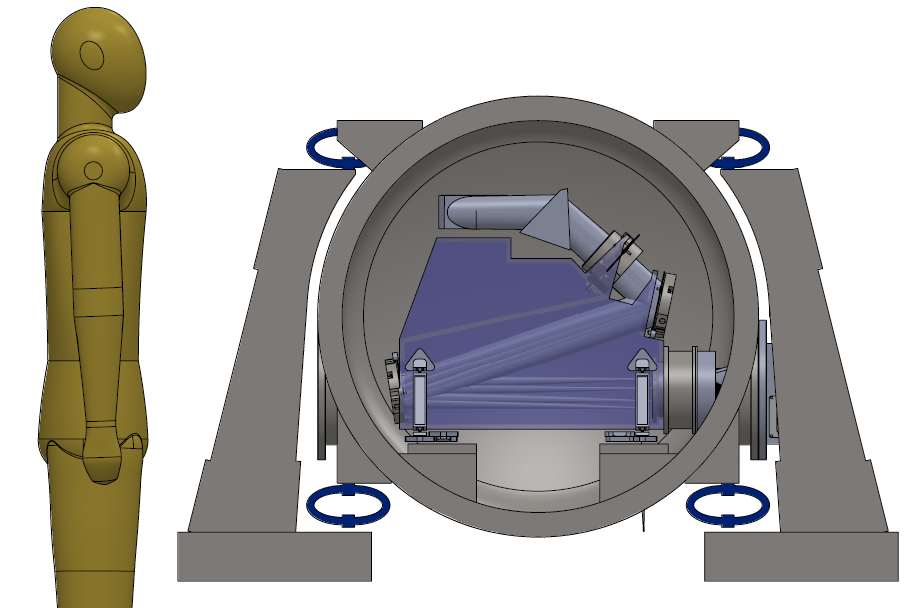Instrument #
Overview #
The RISTRETTO instrument will be composed of 2 main components:
- A spectrograph, with 7 spaxels,
- A an XAO front end with a coronagraph.
To deliver its full performance the system should be installed on an 8m class telescope. The scientific bandwidth is 620-840 nm
The whole instrument is designed to enable the detection of the reflected light from Proxima b
Front-end #
In order to reach the scientific objectives, the RISTRETTO front-end should deliver:
- High strehl ratio > 60% on average,
- High contrast level (2.10-4) on average.
In particular the second point has to be achieved “live”, i.e. not using data redutions tricks.
The strategy is beeing refined, it could be a woofer tweeter sysem and use a fast (> 2kHz) second stage to better correct the lower-order modes that are crucial to achieve our contrast goals.
IFU #
The position angle of the planet is a priori unknown, thus there is the need for an IFU covering the whole area around the star.
The IFU is paved in an hexagonal fashion as shown in the following figure
Fiber link #
The chosen fibers are standard single-mode fibers: Thorlabs S-630-HP. If this proves impractical another option is to use multicore fibers.
The spectrograph #
- The spectrograph will be a diffraction-limited spectrograph, which makes it compact.
- Its design is inspired from HARPS and ESPRESSO. It will be kept under vacuum and thermally controlled to make it as stable as possible.
- The detector needs to be a 4Kx4K CCD.

Coronagraph #
The coronagraph is very specific in this kind of instrument. It has to provide “live” contrast of 10-4, after injection into the 6 off-axis fibers of the IFU.
(Por et al 2018) proposed the SCAR design.
We are looking at different options. We set the following requirements:
- As simple as possible,
- Possibility to have a circular symmetry,
- Contrast should be limited by the AO performance and not the coronagraph.
Potential solutions exist based on the nulling principle, and could be a pupil binary or gray-scale mask, or even a PIAA (Guyon et al. 2003) coronagraph, that would have the advantage of giving a higher coupling of the telescope light into the spectrograph fibers.